 BBC News
BBC NewsBorrowing was £17.4bn last month, the second highest October figure since monthly records began in 1993.
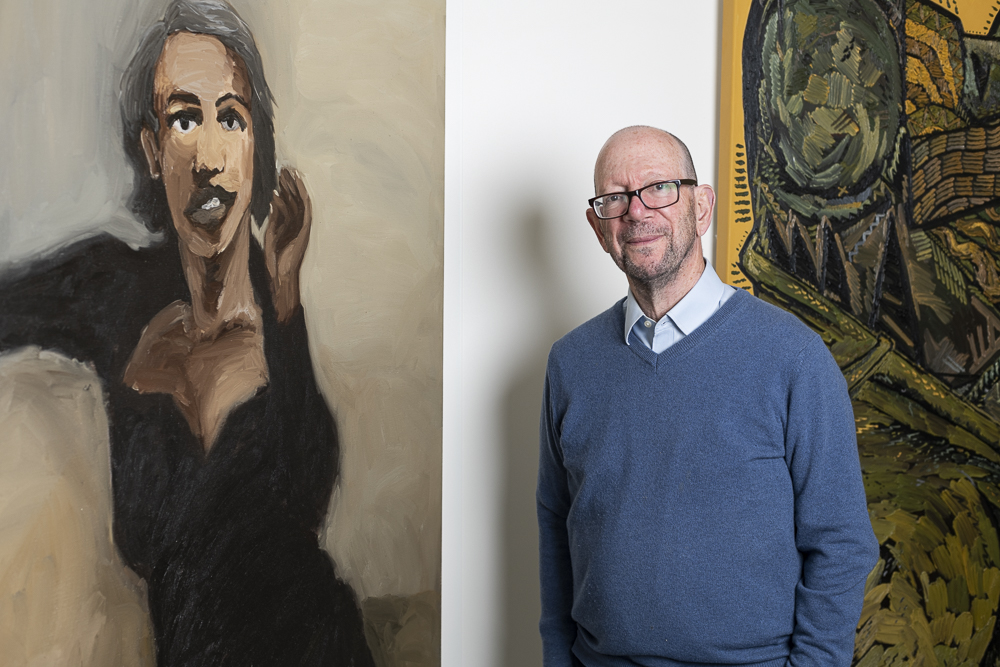
Christopher Jackson meets divorce lawyer Jeremy Levison, the co-founder of Levison Meltzer Pigott, and finds the art collector on top form
If I were starting out my legal career again, I’d be a divorce lawyer. But I wouldn’t be doing it specifically for the pay, or for the ringside seat on marital breakdown. I’d be doing it with a more specific intention: I’d be aiming to work in the offices of Levison Meltzer Pigott.
There again, I’d have a particular reason in mind, other than the quality of the firm. This, incidentally, is beyond question. Jeremy Levison and Simon Pigott (and later Alison Hayes) have been a regular fixture among lists of top family lawyers since founding the firm – their partner Clare Meltzer sadly died in 2003. Even so, I’d be going there for the art.
Many workplaces have fine art collections. One thinks particularly of Deutsche Bank (‘the art collection probably keeps the bank afloat for liquidity,’ says Levison), and I recall stumbling out of a meeting at UBS once to be standing in front of a sea of Lucian Freud sketches. But Levison’s collection is different.
For one thing it’s personal. It’s also part of a smaller business and so feels more special. So does he paint himself? “At school, I had no artistic ability whatsoever,” Levison tells me. “A couple of years ago, I went on a two-day oil painting class in Sussex. I absolutely loved it. However, the experience convinced me not to give up the day job.”
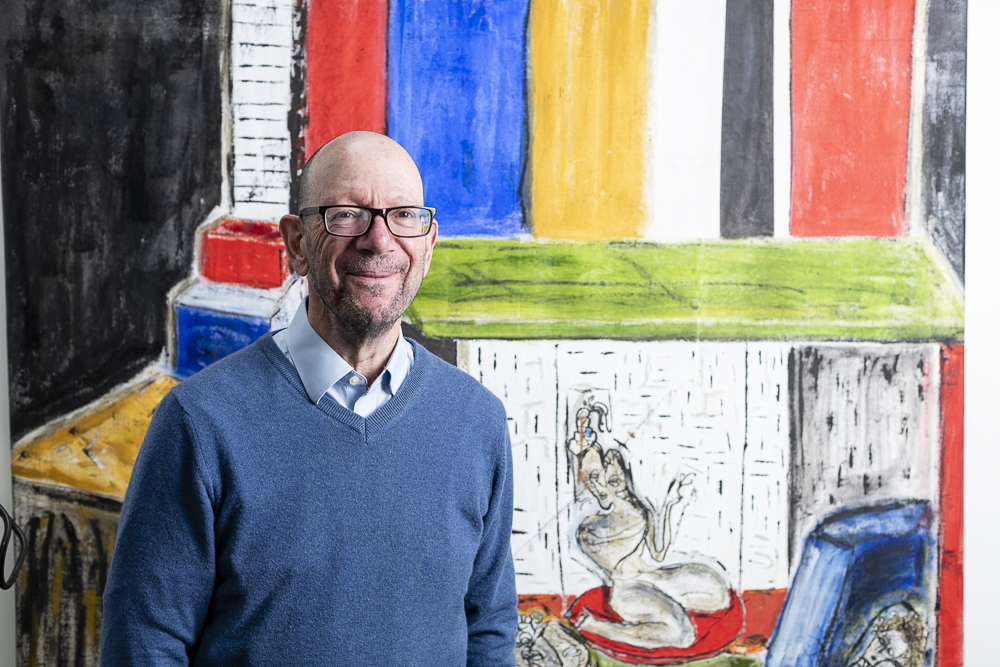
So when did he first start collecting? “It started in the 1970s. I met a chap who was doing prints; he had created a print and I liked it so I bought it. The next major purchase was in 1979. I had a broken heart at the time and there was this beautiful painting of a woman by an artist called ‘Molinari’ in a very ordinary shop window in Rome. That day my worldly wealth was 32 pounds, and this cost me 29 pounds then. I couldn’t resist it, and I still love the work to this day.”
Over time, art collecting became an aspect of travel. His full success as a solicitor was in the future, and at that time he couldn’t have begun to realise how his collection – which now stands at around 500 pieces – would expand. “Whenever I went away anywhere I would buy a piece of art as the souvenir from that trip,” he recalls. “It just sort of went on from there. I was very fortunate, in that I became friends with someone who came into the office from off the street. He wanted to change his name from Christopher Holloway to Christopher Bledowski. Unable to pay me, he offered a drawing instead. Despite this, he proved to be very influential, introducing me to various artists and the boundless creativity of the art world.
Bledowski is an intriguing figure in his own right and deserves more attention. Bledowski would kill himself in Switzerland some time later, and Levison maintains that the quality of the work, which he has come to appreciate ever more over the years, might well have led to world fame.
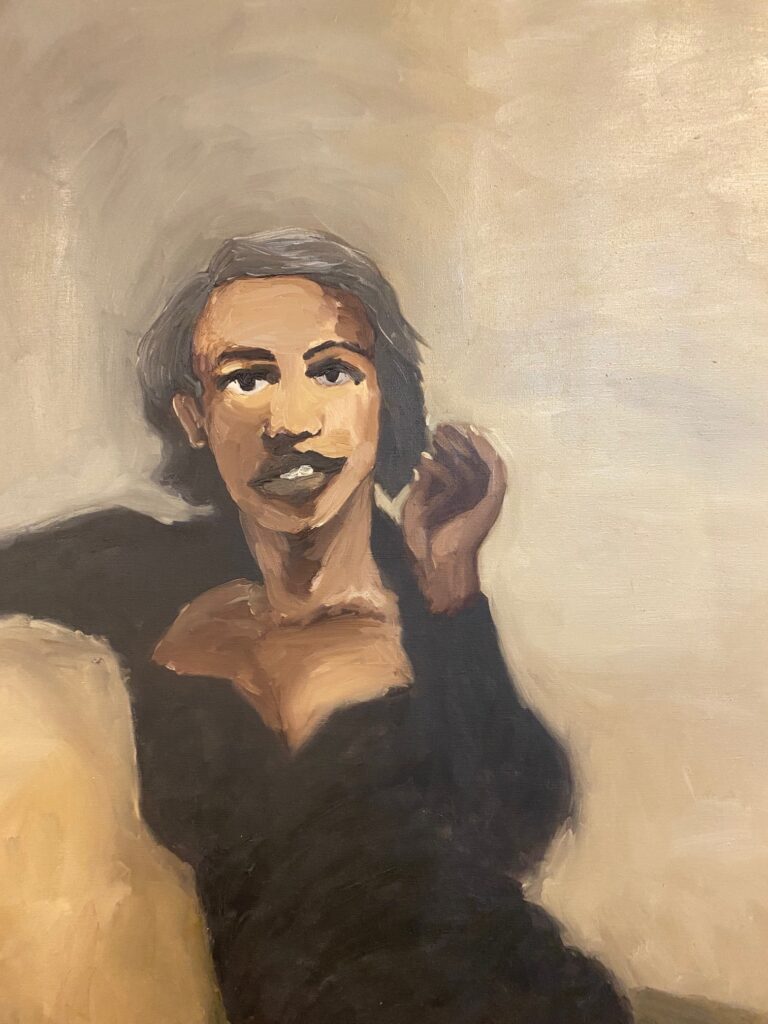
But Levison’s art collection is a legacy of sorts for Bledowski. In time, Levison joined the firm Collyer Bristow and his art collecting continued. “We had all these bare walls,” Levison recalls, “and we had lots of artistic clients. I thought to myself, “Well, why don’t we give the clients an art exhibition on our walls. We did and it was great fun.”’
The idea of a more formal art gallery at Collyer Bristow was born. This was based on a belief that there is far more talent in existence than the art market – always caught up in the almost random anointing of the ‘next big thing’ – has time to recognise. In fact, Levison regrets the notion of the art market, preferring to talk instead about the art world. “The art world has morphed into the art market,” he explains. “I have a lot of time for the art world, but I don’t worry about the art market.”
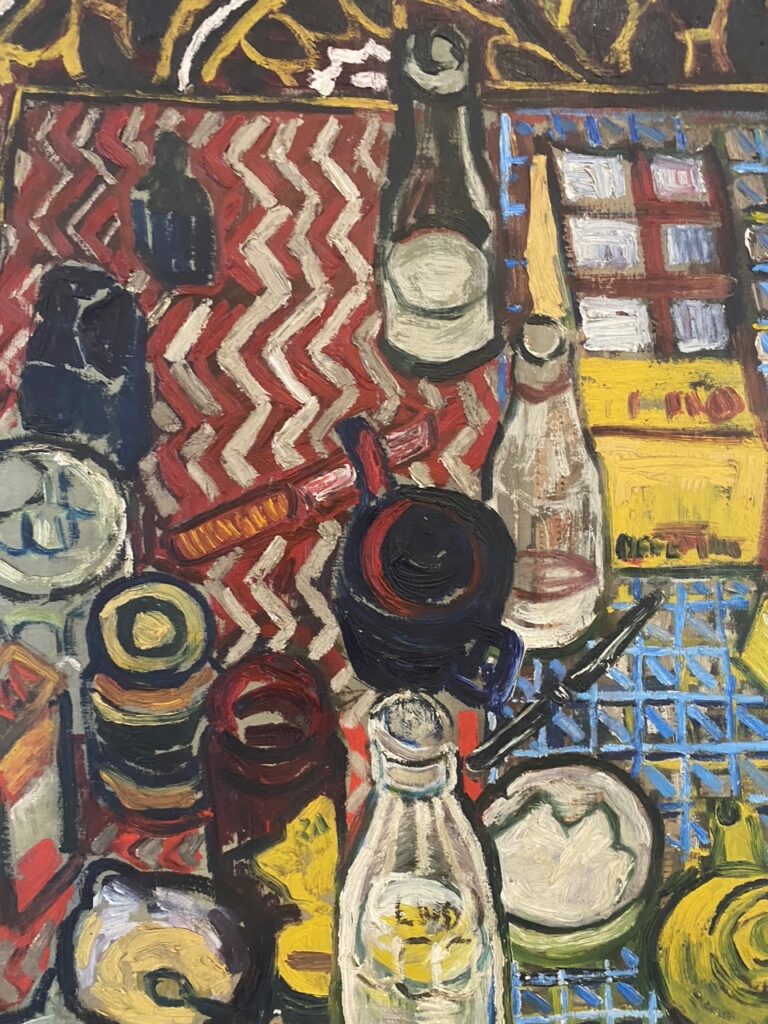
Jeremy Levison’s approach to buying art is rooted in a generous belief in the talents of those who aren’t famous – or aren’t famous yet. “I love living with art. It doesn’t matter if a piece becomes valuable. If it does, that’s an added bonus, but if it doesn’t, that’s fine too because of the joy of living with it.”
Generosity defines Levison’s collecting. “At Collyer Bristow, I thought, ‘We have acres of wall space. Within 100 miles of London, there are probably 5,000 talented artists. Let’s bring them together.’” The gallery space became a wonderful environment that impacted both clients and staff. “At first, it was a curious idea. But soon, the staff became more involved. They began to look forward to the shows. For example, a young secretary had to choose between a two-week holiday in southern Spain or buying a small sculpture. She chose the sculpture. Over the years, that piece has brought her far more joy than any holiday could.”
For Levison, art is an easy choice. “In London, you could spend £1,000 at a restaurant with friends, and we all know how that ends. Or you can buy a number of artworks for the same price and enjoy them forever.”
Has the pandemic changed his approach? “The main thing I did was buy a larger house for more wall space. As my collection grew, so did my need for space. So now I lend out a lot of it.”
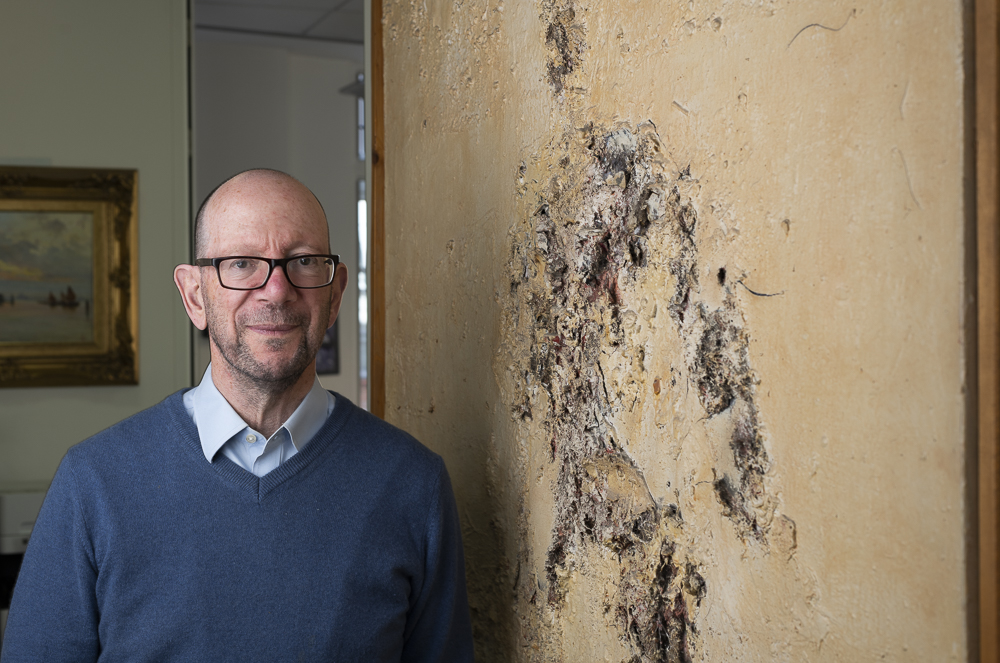
I mention that my first stop in New York is always the Frick Collection. Similarly, my first stop in Cambridge is always Kettle’s Yard. I ask if he would ever consider a Jeremy Levison Collection somewhere in the UK. “Well, my collection is very modest compared to those,” he says. “But I own a building in Bermondsey, and I wonder if at some point that might become a home for the collection. I think my collection shows that a lot can be achieved by someone who doesn’t have a great deal of money.”
It certainly does. I recall my own training at Stevens and Bolton LLP in Guildford. It was a perfectly decent firm, but notable mainly for its blank walls. For some trainees, especially if you’re uncertain about being a lawyer, life at a law firm can feel like the end of the world. I mention I hope the staff realizes how lucky they are. Levison responds, “I think they do. The clients love it as well. It gets talked about constantly, and many clients ask for tours around the gallery.” He also notes that it can be “quite a useful PR exercise” since they host evenings where outside organizations come in, and he talks about how the collection came about.
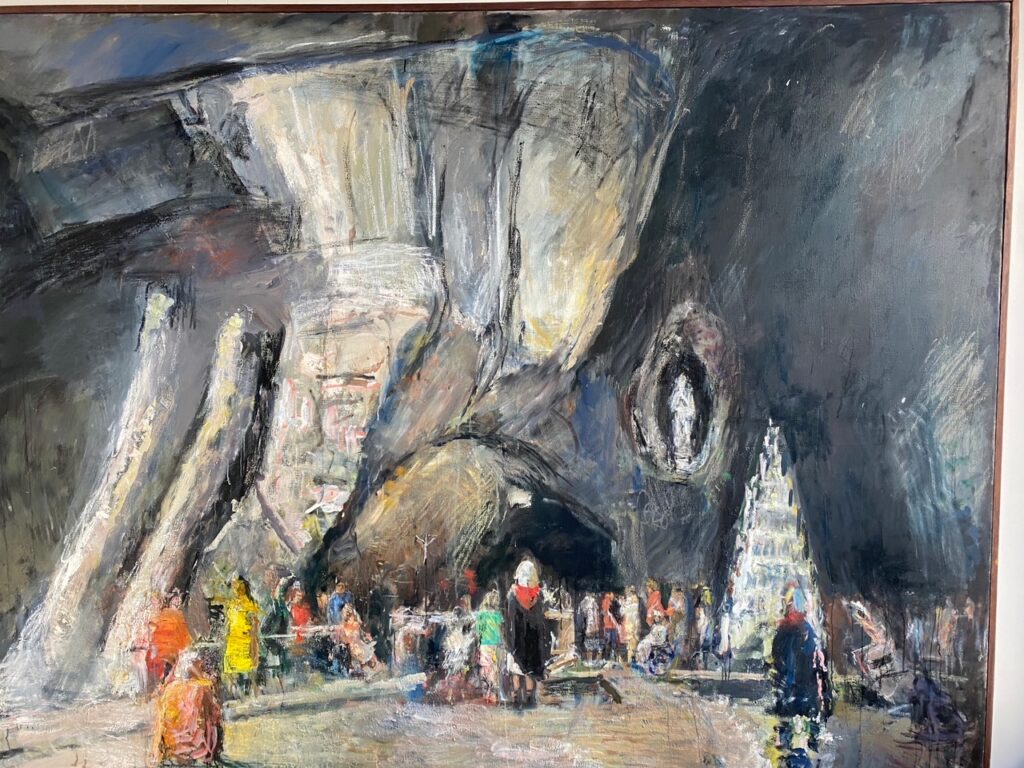
And of course, when you’re getting divorced it must be something to see such a collection on the walls – to know, in effect, that there are other narratives beyond your own, especially if the divorce is contentious.
Jeremy Levison laughs. “Yes, I think coming to see your divorce lawyer is ten times worse than going to the dentist. It’s the moment when you’re admitting that your marriage is definitely over. I often think of myself as being, to a certain extent, a doctor. Some just can’t think about anything other than their predicament. But for others, the art collection is a relief – it’s something else to talk about.”
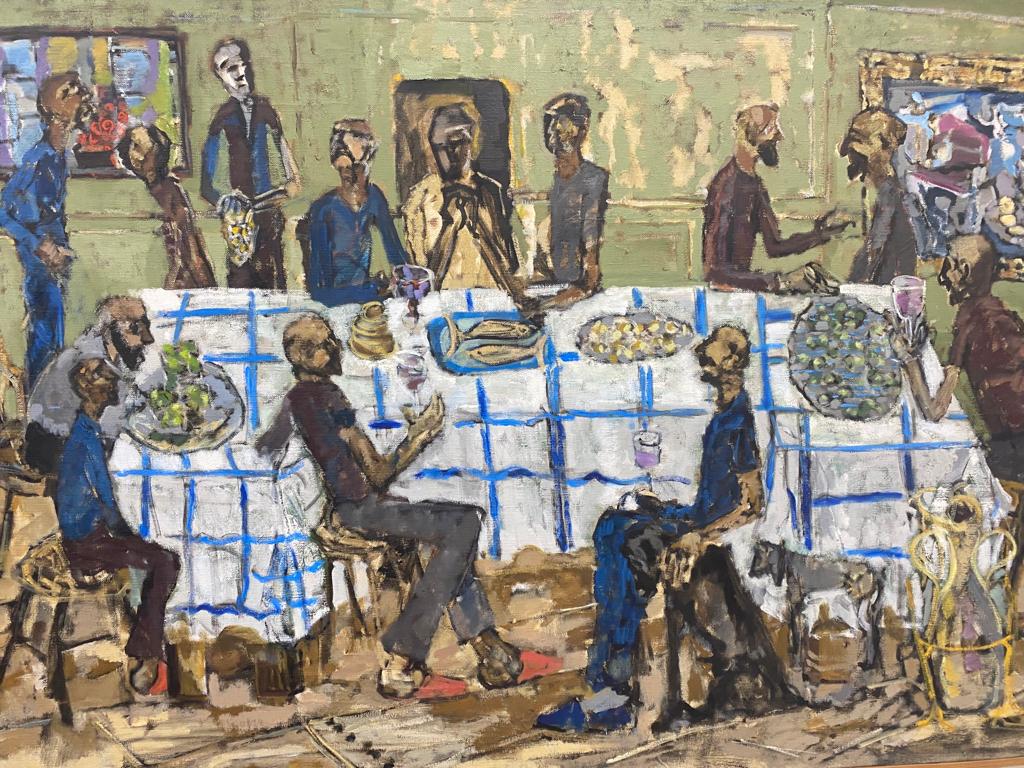
I’ve done the tour many times with Jeremy Levison, but I’m always ready to do it again. Some of the best works like the Rose Wylies, Lynette Yiadom-Boakye, and a truly wonderful Ollie Epp are now at his new house. But the disappointment of that is easily eased by the fact that what’s here is still remarkable. There’s an Andrew Marr over a photocopier (“I’m not sure how good he really is, but I like it”), a beautiful picture by Anthony Eyton called “Our Lady’s Grotto at Lourdes,” a superb Still Life by John Bratby, various Eileen Coopers, a host of Stanley Spencer drawings, a Last Supper by Conrad Romyn, and many others.
With the possible exception of Spencer, Bratby, and Cooper who feature in most surveys of 21st-century art all the artists here deserve more recognition. Yet each of them has met a superb champion in Levison. As always, I leave the building, not regretting my decision to leave the law, but thinking that things might have turned out differently had I had the good luck to train at Levison Meltzer Pigott.